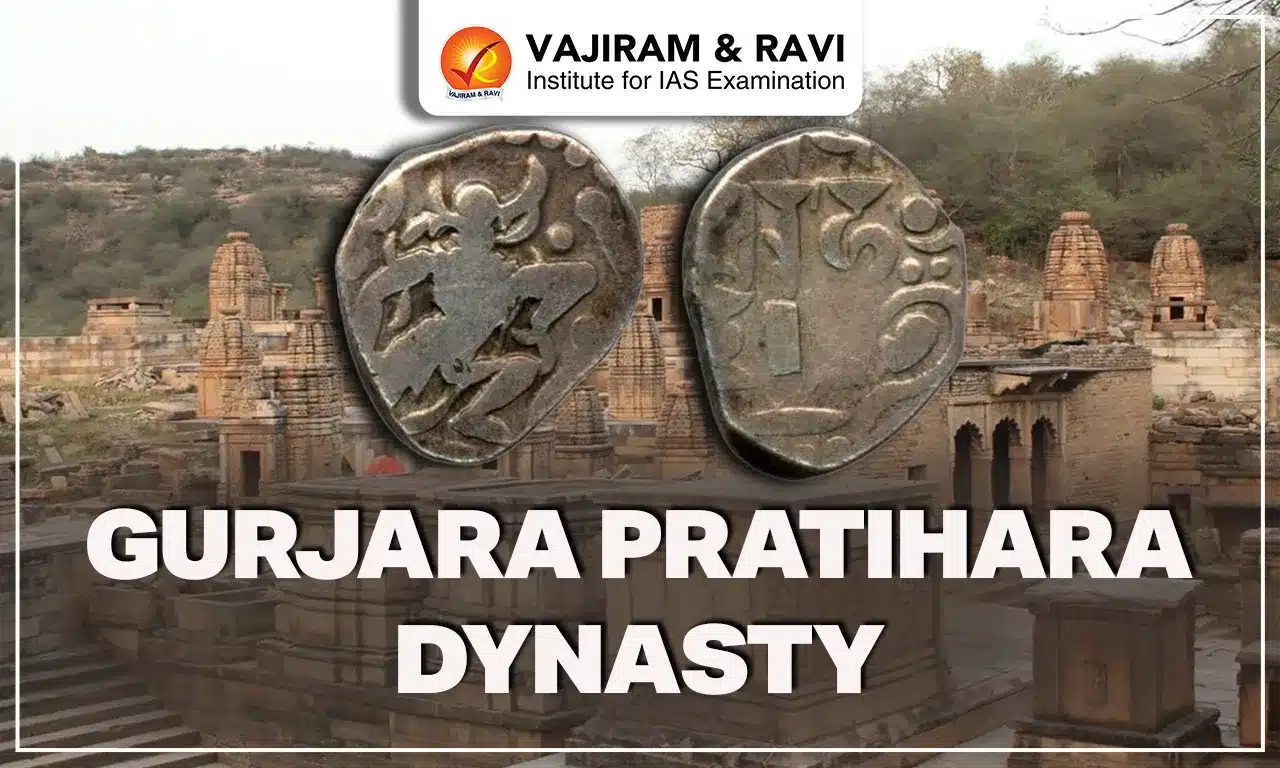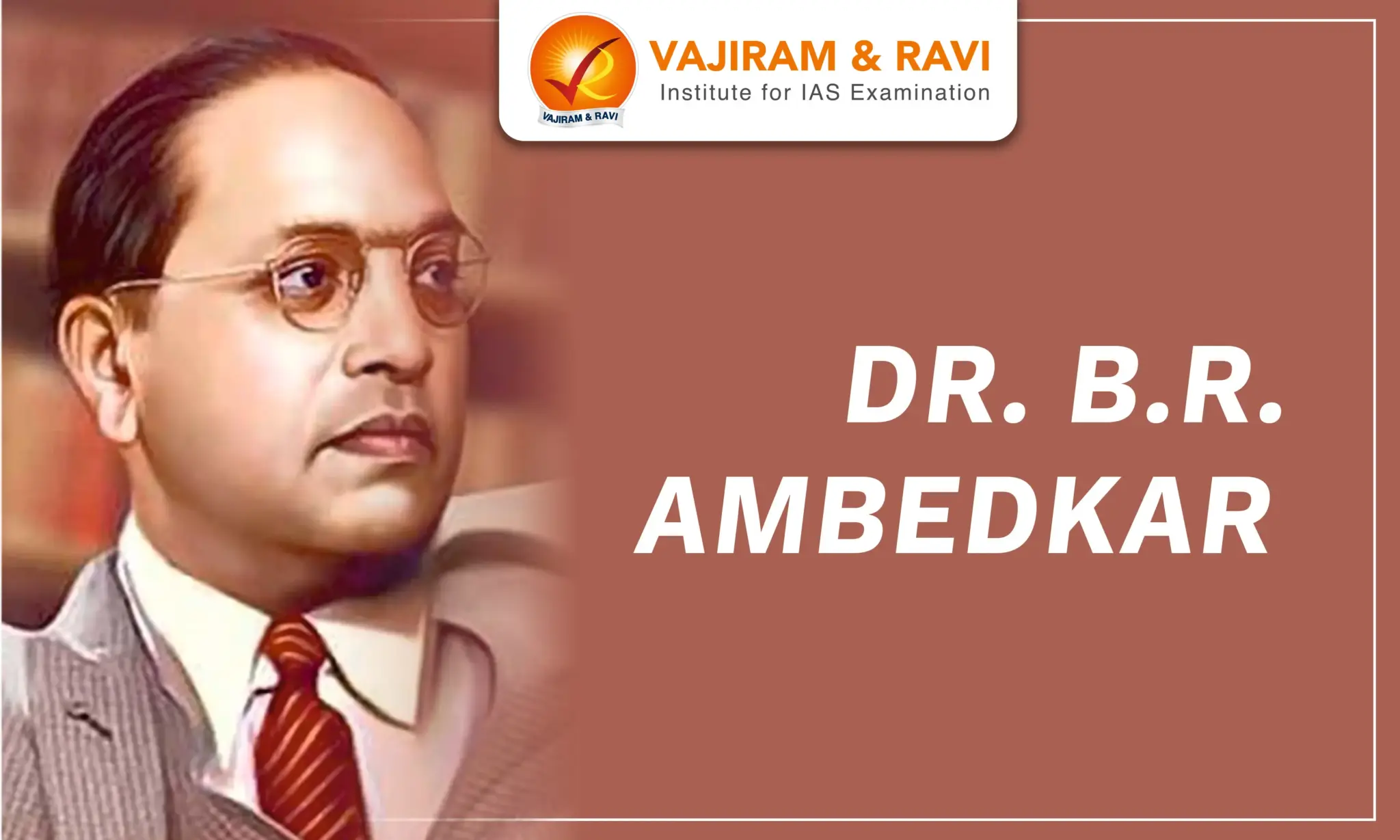The early history of Gurjara Pratiharas is shrouded in mystery. Some historians believe that they came to India from the Central Asian region after the Gupta period and settled in Rajasthan.
- Traditions: The bardic tradition of Rajasthan claims that the Gurjara Pratiharas were born out of a yajna done at Mount Abu. Others born out of this yajna were Chalukyas, Parmaras and Chahmanas.
- For this reason, these four dynasties are also known as agnikulas (fire clans).
- It is further said that these four dynasties of Rajputs were created for the protection of the country from external aggressions.
- Own claim: The Pratiharas claim that they were called Pratihara (literary means doorkeeper) because their ancestor Lakshmana served as a doorkeeper to his brother Rama.
- Geographical name: The geographical name of Gujarat is derived from Gurjara.
What is the Political History of Gurjara-Pratiharas?
Some of the important rulers of the Gurjara-Pratihara dynasty and their significance:
| Gurjara-Pratiharas | |||||
| Period: 730 - 1036 CE | Capital: Kannauj | ||||
| King | Significance | ||||
| Nagabhata I 730-756 AD |
|
||||
| Vatsaraja 775-800 AD |
|
||||
| Nagabhatta II (800-833 AD) |
|
||||
| Bhoja I (836-885 AD) |
|
||||
| Contribution to Architecture | |||||
| Teli-ka-Mandir, Gwalior |
|
||||
| Mahendrapala I (885-910 AD) |
|
||||
Contribution of Gurjara-Pratiharas to Art and Architecture (Mahu-Gujjara style)
| Mahavira Jain Temple, Osican, Rajasthan |
|
| Bateswar Hindu Temples, Madhya Pradesh |
|
| Baroli Temples, Rajasthan |
|
| Coins |
|
Contribution of Gurjara-Pratiharas to Literature
| Rajashekhara |
|
| Sulaiman |
|
What was the Tripartite Struggle for Kannauj?
The metropolis of Kannauj had suffered a power vacuum following the death of Harsha without an heir, which resulted in the disintegration of the Empire of Harsha.
- Yashovarman: This space was eventually filled by Yashovarman around a century later, but his position was dependent upon an alliance with Lalitaditya Muktapida.
- Tripartite struggle: When Muktapida undermined Yashovarman, a tri-partite struggle for control of the city developed involving the Pratiharas, the Palas of Bengal in the east and the Rashtrakutas, whose base lay at the south in the Deccan.
- Victory of Pratiharas: Victory of King Vatsaraja of the Pratihara dynasty successfully challenged and defeated the Pala ruler Dharmapala and Dantidurga, the Rashtrakuta king, for control of Kannauj.
- Tripartite struggle: When Muktapida undermined Yashovarman, a tri-partite struggle for control of the city developed involving the Pratiharas, the Palas of Bengal in the east and the Rashtrakutas, whose base lay at the south in the Deccan.
- Attempt by Rashtrakutas: Around 786, the Rashtrakuta ruler Dhruva crossed the Narmada River into Malwa and tried to capture Kannauj from there.
- Victories over Vatsaraja: Vatsraja was defeated by the Dhruva Dharavarsha of the Rashtrakuta dynasty around 800 AD.
- Nagabhatta II: Vatsaraja was succeeded by Nagabhata II, who was initially defeated by the Rashtrakuta ruler Govinda III.
- Reclaimed Kannauj: He later recovered Malwa from the Rashtrakutas, conquered Kannauj and the Indo-Gangetic Plain as far as Bihar from the Palas, and again checked the Muslims in the west.
- Kannauj as the centre of the Gurjara-Pratihara kingdom: Kannauj became the centre of the Gurjara-Pratihara state, which covered much of northern India during the peak of their power.
How did the Gurjara-Pratihara Dynasty decline?
- Feudatories: Several feudatories of the empire took advantage of the temporary weakness of the Gurjara-Pratiharas to declare their independence.
- Various feudatories who carved independent states included the Paramaras of Malwa, the Chandelas of Bundelkhand, the Kalachuris of Mahakoshal, the Tomaras of Haryana, and the Chahamanas of Shakambhari.
- Attack by Rashtrakutas: Emperor Indra III of the Rashtrakuta dynasty briefly captured Kannauj in 916, and although the Pratiharas regained the city, their position continued to weaken.
- Attack by Chandelas: The Gurjara-Pratiharas lost control of Rajasthan to their feudatories, and the Chandelas captured the strategic fortress of Gwalior in central India around 950.
- Ghaznavid invasion: Mahmud of Ghazni captured Kannauj in 1018, and the Pratihara ruler Rajapala fled. The Imperial Pratihara dynasty broke into several small states after the Ghaznavid invasions.
- These branches fought each other for territory, and one of the branches ruled Mandore till the 14th century.
- This Pratihara branch had marital ties with Rao Chunda of the Rathore clan and gave Mandore in dowry to Chunda.
| Fudatory | Capital | Region | Remark |
| Chahamanas (6-12th CAD) | Shakambari (Sambar Lake town of Rajasthan) | Saptadalaksha region of present Rajasthan | Also Known as Chauhans of Ajmer |
| Chandelas ( 9-12th CAD) | Jejaka Bhukti | Bundelkhand region | Belonged to Chandel clan of Rajputs |
| Guhilas (8-9th CAD) | Nagahrada (Nagda) and Aghata (Ahar) | Mewar region | Also known as Guhilas of Mewar |
| Tomars( 14-16th CAD) | Delhi | Parts of Delhi and Haryana | Belonged to Tomar clan of Rajputs |
Last updated on November, 2025
→ Check out the latest UPSC Syllabus 2026 here.
→ Join Vajiram & Ravi’s Interview Guidance Programme for expert help to crack your final UPSC stage.
→ UPSC Mains Result 2025 is now out.
→ UPSC Notification 2026 is scheduled to be released on January 14, 2026.
→ UPSC Calendar 2026 is released on 15th May, 2025.
→ The UPSC Vacancy 2025 were released 1129, out of which 979 were for UPSC CSE and remaining 150 are for UPSC IFoS.
→ UPSC Prelims 2026 will be conducted on 24th May, 2026 & UPSC Mains 2026 will be conducted on 21st August 2026.
→ The UPSC Selection Process is of 3 stages-Prelims, Mains and Interview.
→ UPSC Result 2024 is released with latest UPSC Marksheet 2024. Check Now!
→ UPSC Prelims Result 2025 is out now for the CSE held on 25 May 2025.
→ UPSC Toppers List 2024 is released now. Shakti Dubey is UPSC AIR 1 2024 Topper.
→ UPSC Prelims Question Paper 2025 and Unofficial Prelims Answer Key 2025 are available now.
→ UPSC Mains Question Paper 2025 is out for Essay, GS 1, 2, 3 & GS 4.
→ UPSC Mains Indian Language Question Paper 2025 is now out.
→ UPSC Mains Optional Question Paper 2025 is now out.
→ Also check Best IAS Coaching in Delhi
Gurjara Pratihara Dynasty FAQs
Q1. What are the features of Mahu-Gujjara style of architecture?+
Q2. What is Oswal Jain Community?+

















